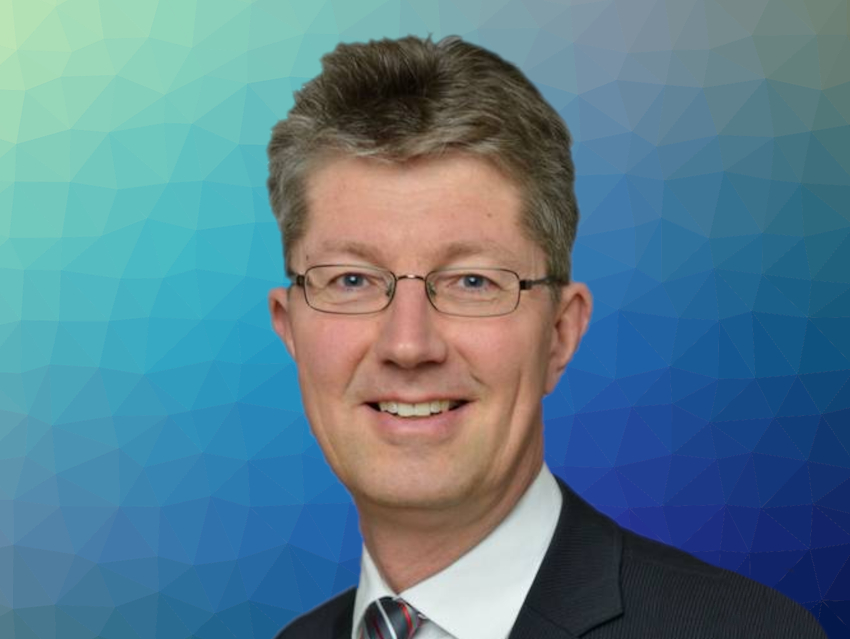Franc Meyer, University of Göttingen, Germany, has received the GDCh Prize for Inorganic Chemistry from the Gesellschaft Deutscher Chemiker (GDCh, German Chemical Society). The award honors outstanding scientific work in the field of inorganic chemistry and is endowed with EUR 7,500. It was presented at the 21st Conference on Inorganic Chemistry on September 26, 2022.
Meyer receives the award for his constant scientific excellence in the field of coordination chemistry, especially in the field of cooperative effects between multinary metal centers, in which he plays a leading role worldwide. His research interests include, e.g., biomimetic iron-sulfur clusters, the bimetallic activation of small molecules, hybrid systems for electro- and photocatalytic water oxidation, merging bioinorganic and organometallic concepts for catalysis, and molecular nanoswitches.
Franc Meyer, born in 1965 in Hamburg, Germany, studied chemistry at the RWTH Aachen University, Germany, where he received his Ph.D. in 1993. After a postdoctoral stay at the University of Utah, Salt Lake City, USA, completed his habilitation at the University of Heidelberg, Germany, in 2000. In 2001, he joined the University of Göttingen, where he still serves as Professor of Inorganic Chemistry.
Among other honors, Meyer has received a Liebig Fellowship from the Fonds der Chemischen Industrie (FCI, German Chemical Industry Fund) in 1995, a Heisenberg Fellowship from the Deutsche Forschungsgemeinschaft (DFG, German Research Foundation) in 2000, and the Freudenberg Award from the Heidelberger Akademie der Wissenschaften (Heidelberg Academy of Science), Germany, in 2001. He is an Ordinary Member of the Göttingen Academy of Sciences and Humanities, a Member of the Royal Physiographic Society in Lund, Sweden, and a Member of the German National Academy of Sciences Leopoldina.
Selected Publications
- Between imide, imidyl and nitrene – an imido iron complex in two oxidation states,
Sascha Reith, Serhiy Demeshko, Beatrice Battistella, Alexander Reckziegel, Christian Schneider, Andreas Stoy, Crispin Lichtenberg, Franc Meyer, Dominik Munz, C. Gunnar Werncke,
Chem. Sci. 2022, 13, 7907–7913.
https://doi.org/10.1039/d2sc01088g - Luminescent Iridium Complexes with a Sulfurated Bipyridine Ligand: PCET Thermochemistry of the Disulfide Unit and Photophysical Properties,
Manuel Oelschlegel, Shao-An Hua, Lucius Schmid, Philipp Marquetand, Anna Bäck, Jan-Hendrik Borter, Jana Lücken, Sebastian Dechert, Oliver S. Wenger, Inke Siewert, Dirk Schwarzer, Leticia González, Franc Meyer,
Inorg. Chem. 2022, 61, 13944–13955.
https://doi.org/10.1021/acs.inorgchem.2c01930 - A spin crossover FeII4L6 cage based on pyridyl-hydrazone sites,
Weiyang Li, Cuilian Liu, Joseph Kfoury, Julianna Oláh, Koen Robeyns, Michael L. Singleton, Serhiy Demeshko, Franc Meyer, Yann Garcia,
Chem. Commun. 2022.
https://doi.org/10.1039/d2cc04476e - A Double-Switching Multistable Fe4 Grid Complex with Stepwise Spin-Crossover and Redox Transitions,
Benjamin Schneider, Serhiy Demeshko, Sebastian Dechert, Franc Meyer,
Angew. Chem. Int. Ed. 2010, 49, 9274–9277.
https://doi.org/10.1002/anie.201001536 - Nickel-centred proton reduction catalysis in a model of [NiFe] hydrogenase,
Deborah Brazzolotto, Marcello Gennari, Nicolas Queyriaux, Trevor R. Simmons, Jacques Pécaut, Serhiy Demeshko, Franc Meyer, Maylis Orio, Vincent Artero, Carole Duboc,
Nat. Chem. 2016, 8, 1054–1060.
https://doi.org/10.1038/NCHEM.2575 - Polynuclear transition metal complexes of metal⋯metal-bridging compartmental pyrazolate ligands,
Julia Klingele, Sebastian Dechert, Franc Meyer,
Coord. Chem. Rev. 2009, 253, 2698–2741.
https://doi.org/10.1016/j.ccr.2009.03.026




